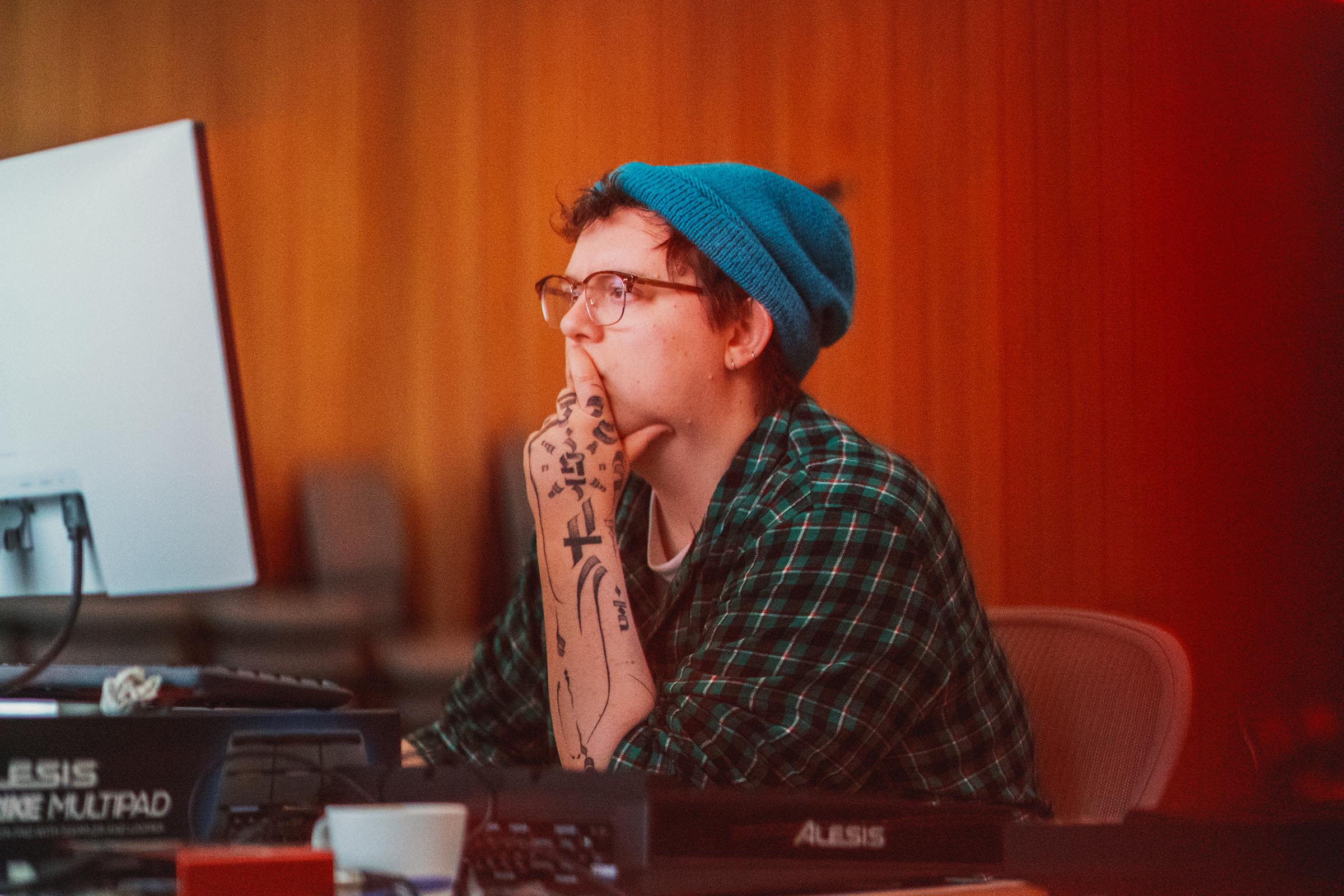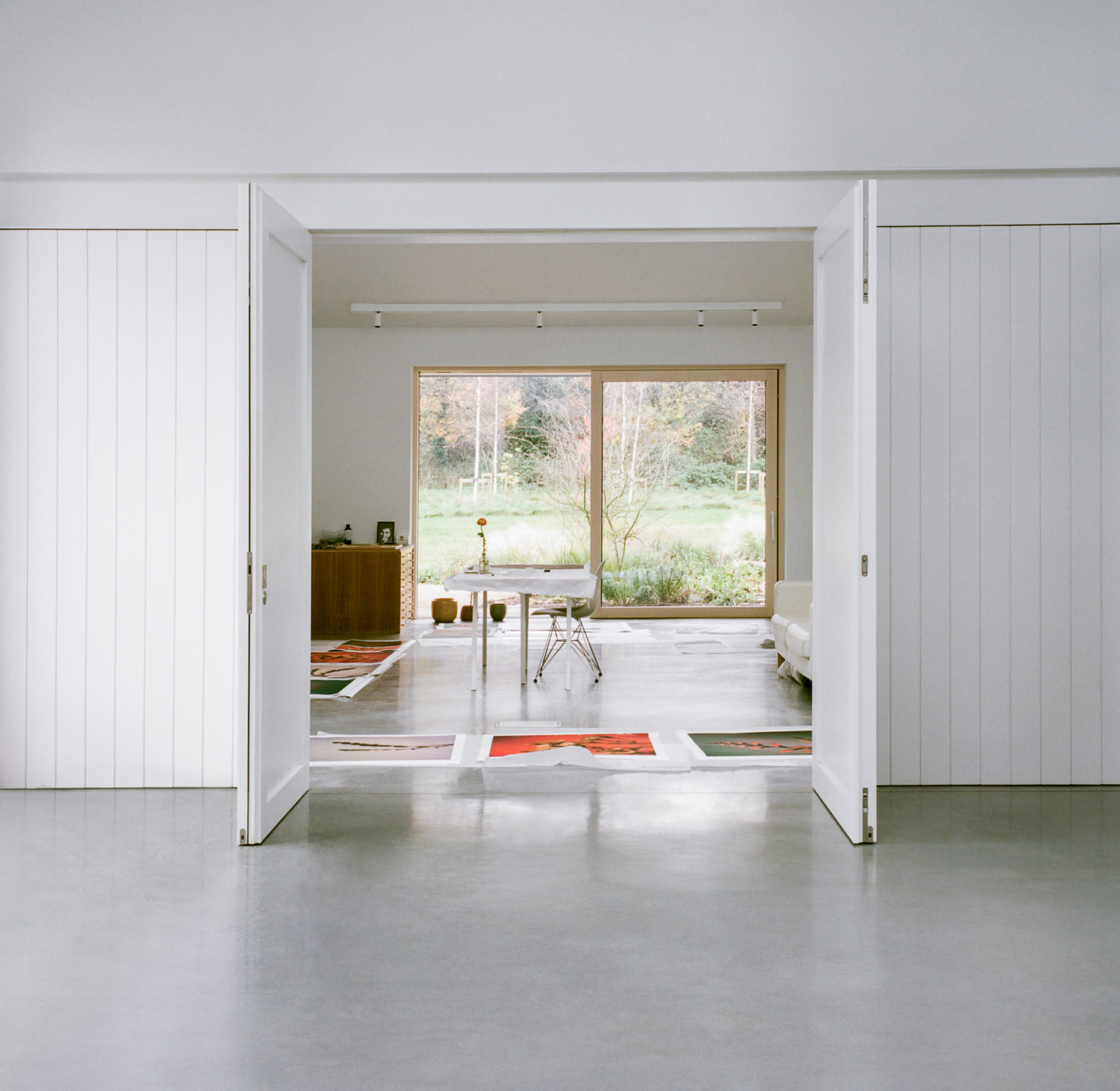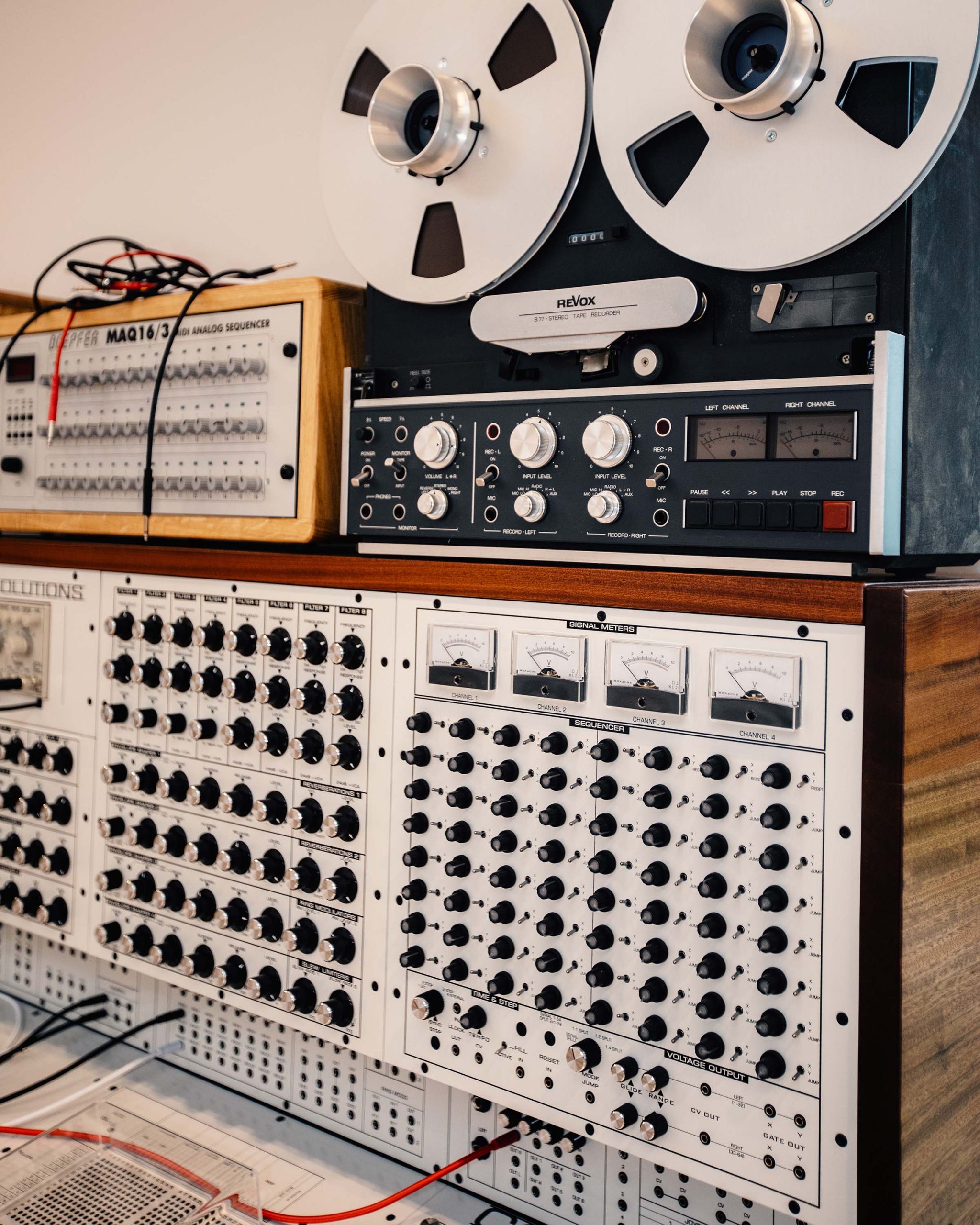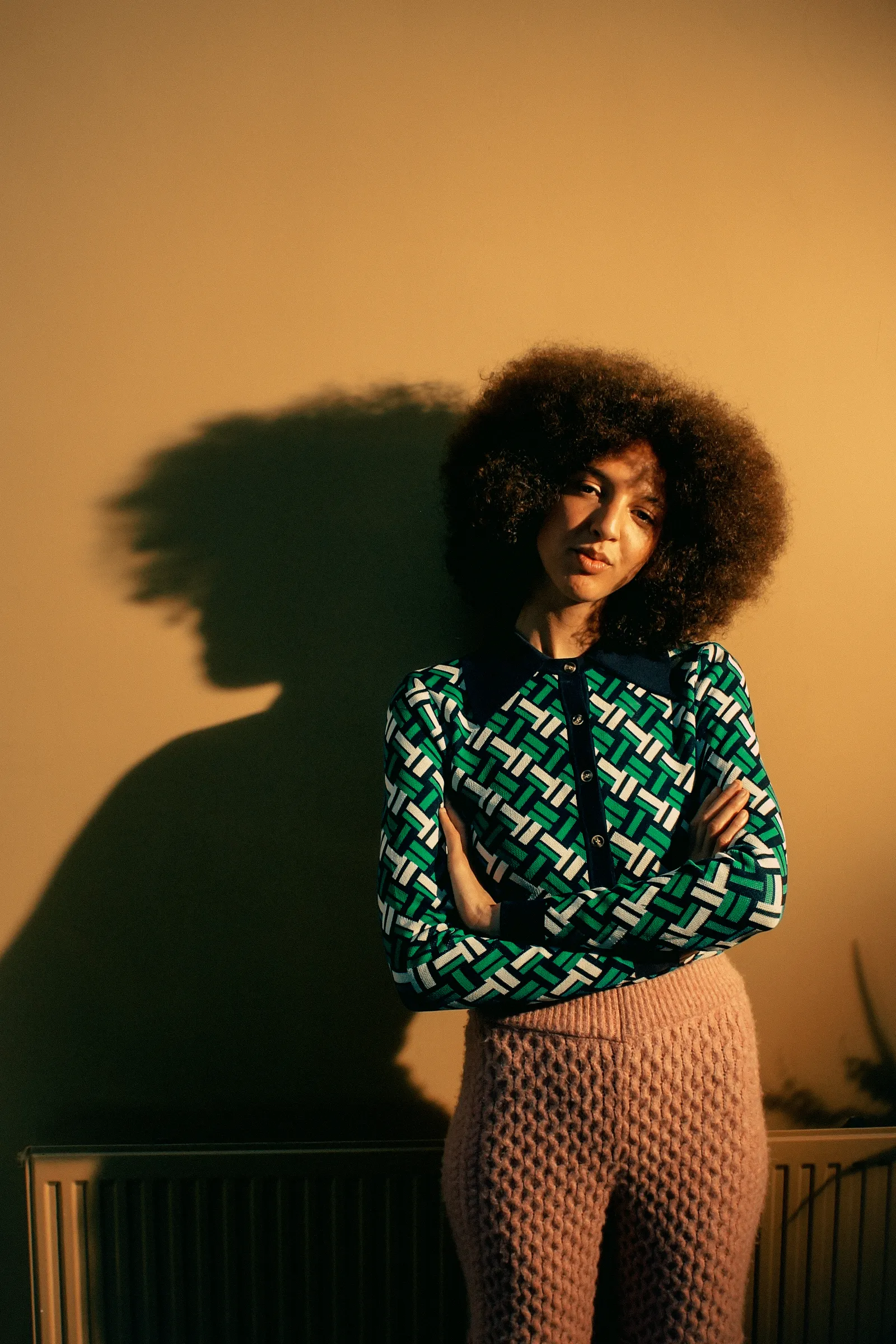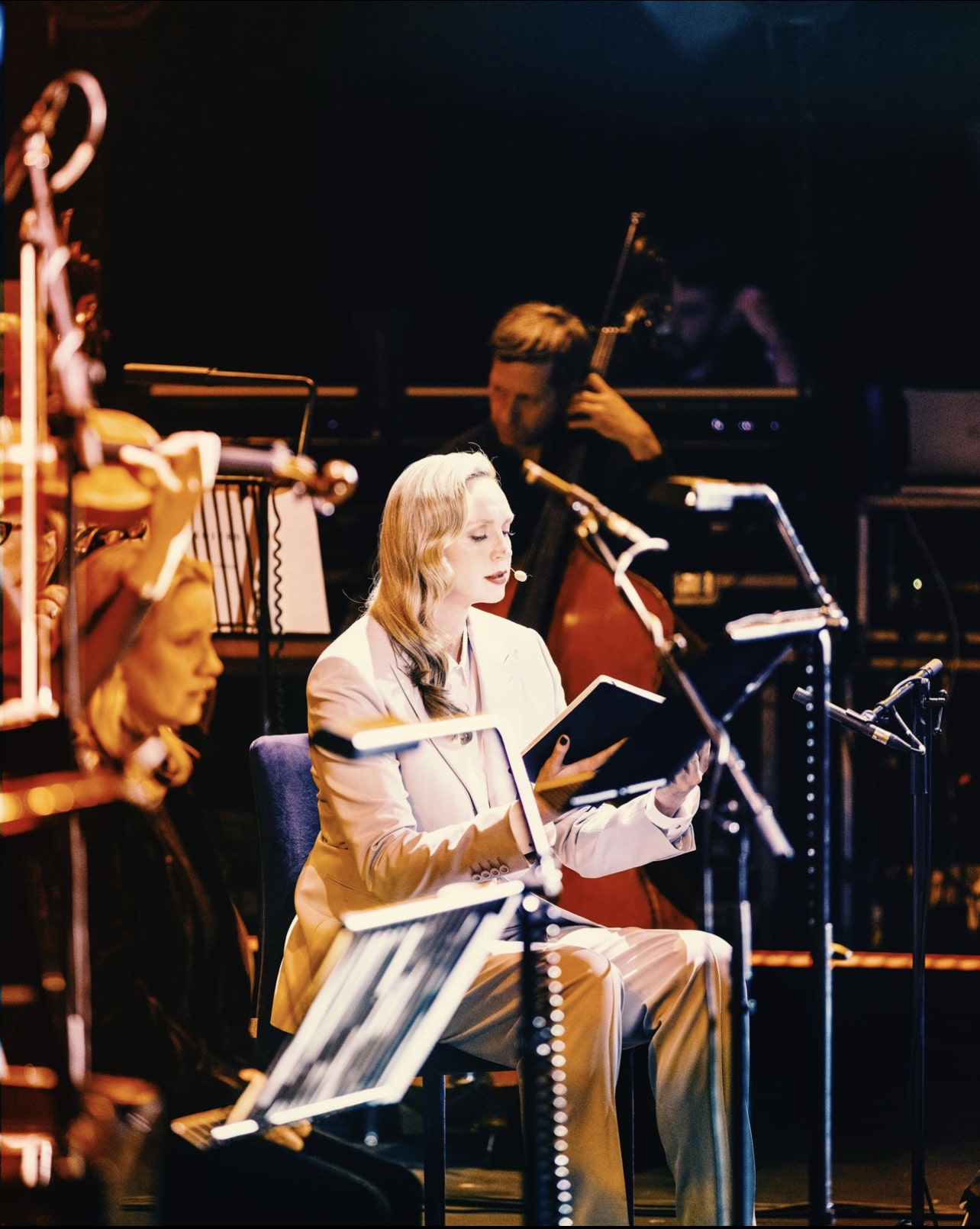Cee Haines — or CHAINES — is a composer, multi-instrumentalist, and multi-media artist. With a background in classical composition, as well as in contemporary electronic and electro-acoustic production, their music is deeply idiosyncratic. At times peculiar, bewildering, and haunting, and at other times demonstrating a bizarre sense of humour, its layered orchestration is built upon a dreamlike sonic architecture. In 2019, CHAINES received the PRS Foundation’s Oram Award for innovation in music and sound technologies, while their 2018 album The King won praise from the likes of FACT, The Wire, The Quietus, and Boomkat. Last year, they premiered an orchestral/electronic arrangement of 1990s gaming music entitled Tribute to Pokémon, Ecco, and Secret of Mana for the Royal Philharmonic Orchestra at the BBC Proms’ first ever Gaming Prom. In April 2023, CHAINES participated in Studio Richter Mahr’s artist-in-residence programme.
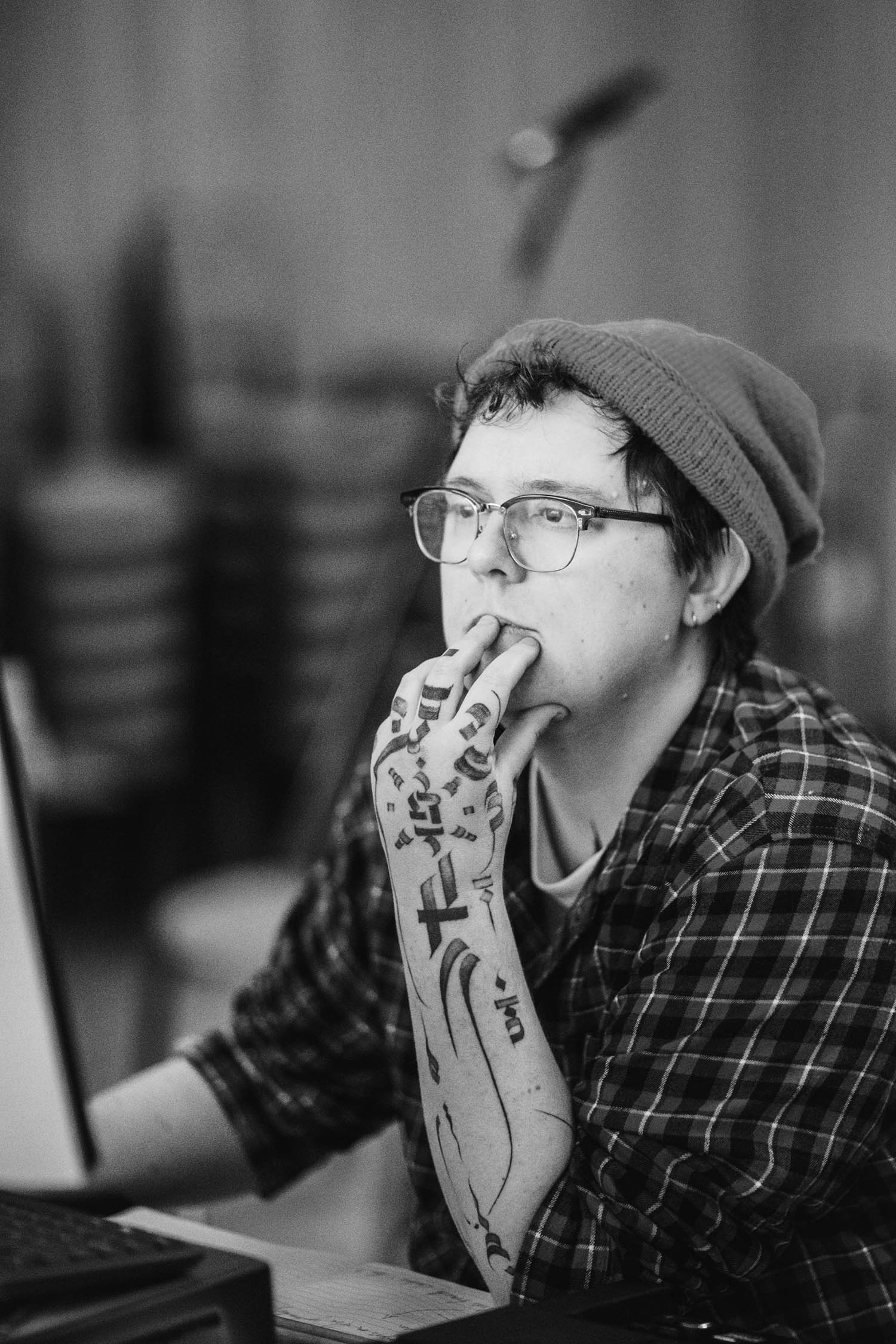


TEXT: SELIM BULUT
PHOTOGRAPHY: MARIE SUTTER
